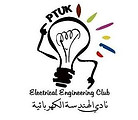
نادي الهندسة الكهربائية
لبناء شخصية هندسية متكاملة

Design And Simulation of A Near-Field WPT Charging System Prototype Using Closed Loop Boost Converter
Graduation Project
Date/Semester:
First Semester 2024
Published Date:
Saturday, 10 February 2024
Abstract
Recently, wireless power transfer (WPT) system has been widely used due to the shortcomings of fossil fuels and environmental pollution caused in electric and hybrid vehicles, as well as the use of electronic devices such as mobile phones, passive sensors, portable lights, etc... However, WPT system faces potential challenges such as power losses due to transfer distance and misalignments or orientation between the transmitter and receiver coils. Thus, the demand of a stable, low cost and efficient WPT system is increased. In this project, a near field resonant inductive WPT charging system composed with a BOOST converter is presented. The series-series S-S capacitor compound compensation topology network is used. The design is composed of a full-bridge inverter and LC resonance circuit at the transmitter side, and LC resonance circuit, full-bridge rectifier, smoothing filter and a BOOST converter at the receiver side. The DC current from DC power Supply inters a bridge inverter. At the Bridge inverter converts the DC current to AC with frequency of 50KHz. Then the AC current passes to LC resonance circuit (Resonance transmitter). The generated magnetic field provides a current at the receiver coil wirelessly. The received AC current is converted from AC to DC. The resulted wave has high ripple thus, a smoothing filter is used. After that, the boost amplified the input voltage to 24V. The boost has an IP controller that controls the duty cycle of the boost. The duty cycle controls the amount of amplifying with utilize a stable output. The boost converter is the simplest way to increase the voltage of a DC supply which is not possible with the help of the transformers, with the advantages of promises high efficiency, simplicity and low cost. The design is simulated using MATLAB software. The effect of varying Vin (where changing the input voltage affects the transmitted power thus, it is similar to the distance effect) is studied. The results show the stability of the output voltage where the output voltage maintained at 24 V while varying Vin from 30 to 50 V ( the distance). Indeed, stability of both the output power and the efficiency at different V in values is noticed. Where a sufficient values are achieved of both of them . The output power is around 29.6 W with efficiency of 99.88%. Moreover, the effect of varying the load resistance is studied. Different load resistance are used to present different loads. The results show that the output voltage remains stable at 24 V while increasing the load resistance from 10Ω to 35Ω due to the Boost converter composed with the PI controller. Although the current is decreased which decreases the output power, the efficiency remains high and stable (99.83%) by increasing RL. The proposed prototype provides an efficient WPT system with stable output voltage and high efficiency. The design is efficient, simple and inexpensive. Thus, it can be used as a base to advance WPT charging systems. With the availability of capabilities, this prototype can be applied to real applications such as charging electrical veiachles while standing or while slow movement specially for Taxi.